Regulation of the hippocampal translatome by Apoer2-ICD release
- PMID: 37726747
- PMCID: PMC10510282
- DOI: 10.1186/s13024-023-00652-1
Regulation of the hippocampal translatome by Apoer2-ICD release
Abstract
Background: ApoE4, the most significant genetic risk factor for late-onset Alzheimer's disease (AD), sequesters a pro-synaptogenic Reelin receptor, Apoer2, in the endosomal compartment and prevents its normal recycling. In the adult brain, Reelin potentiates excitatory synapses and thereby protects against amyloid-β toxicity. Recently, a gain-of-function mutation in Reelin that is protective against early-onset AD has been described. Alternative splicing of the Apoer2 intracellular domain (Apoer2-ICD) regulates Apoer2 signaling. Splicing of juxtamembraneous exon 16 alters the γ-secretase mediated release of the Apoer2-ICD as well as synapse number and LTP, and inclusion of exon 19 ameliorates behavioral deficits in an AD mouse model. The Apoer2-ICD has also been shown to alter transcription of synaptic genes. However, the role of Apoer2-ICD release upon transcriptional regulation and its role in AD pathogenesis is unknown.
Methods: To assess in vivo mRNA-primed ribosomes specifically in hippocampi transduced with Apoer2-ICD splice variants, we crossed wild-type, cKO, and Apoer2 cleavage-resistant mice to a Cre-inducible translating ribosome affinity purification (TRAP) model. This allowed us to perform RNA-Seq on ribosome-loaded mRNA harvested specifically from hippocampal cells transduced with Apoer2-ICDs.
Results: Across all conditions, we observed ~4,700 altered translating transcripts, several of which comprise key synaptic components such as extracellular matrix and focal adhesions with concomitant perturbation of critical signaling cascades, energy metabolism, translation, and apoptosis. We further demonstrated the ability of the Apoer2-ICD to rescue many of these altered transcripts, underscoring the importance of Apoer2 splicing in synaptic homeostasis. A variety of these altered genes have been implicated in AD, demonstrating how dysregulated Apoer2 splicing may contribute to neurodegeneration.
Conclusions: Our findings demonstrate how alternative splicing of the APOE and Reelin receptor Apoer2 and release of the Apoer2-ICD regulates numerous translating transcripts in mouse hippocampi in vivo. These transcripts comprise a wide range of functions, and alterations in these transcripts suggest a mechanistic basis for the synaptic deficits seen in Apoer2 mutant mice and AD patients. Our findings, together with the recently reported AD-protective effects of a Reelin gain-of-function mutation in the presence of an early-onset AD mutation in Presenilin-1, implicate the Reelin/Apoer2 pathway as a target for AD therapeutics.
Keywords: Alternative splicing; Alzheimer’s TRAP-Seq; ApoE; Apoer2; Reelin; Synaptic homeostasis.
© 2023. Editorial Group and BioMed Central Ltd., part of Springer Nature.
Conflict of interest statement
The authors declare no competing interests.
Joachim Herz is a cofounder of Reelin Therapeutics.
Figures
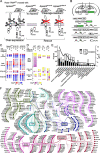
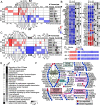

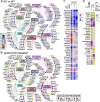
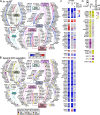
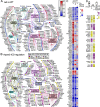

Update of
-
Apoer2-ICD-dependent regulation of hippocampal ribosome mRNA loading.Res Sq [Preprint]. 2023 Jun 28:rs.3.rs-3040567. doi: 10.21203/rs.3.rs-3040567/v1. Res Sq. 2023. Update in: Mol Neurodegener. 2023 Sep 19;18(1):62. doi: 10.1186/s13024-023-00652-1. PMID: 37461529 Free PMC article. Updated. Preprint.
Similar articles
-
Apoer2-ICD-dependent regulation of hippocampal ribosome mRNA loading.Res Sq [Preprint]. 2023 Jun 28:rs.3.rs-3040567. doi: 10.21203/rs.3.rs-3040567/v1. Res Sq. 2023. Update in: Mol Neurodegener. 2023 Sep 19;18(1):62. doi: 10.1186/s13024-023-00652-1. PMID: 37461529 Free PMC article. Updated. Preprint.
-
APOER2 splicing repertoire in Alzheimer's disease: Insights from long-read RNA sequencing.PLoS Genet. 2024 Jul 22;20(7):e1011348. doi: 10.1371/journal.pgen.1011348. eCollection 2024 Jul. PLoS Genet. 2024. PMID: 39038048 Free PMC article.
-
The apolipoprotein receptor LRP3 compromises APP levels.Alzheimers Res Ther. 2021 Nov 2;13(1):181. doi: 10.1186/s13195-021-00921-5. Alzheimers Res Ther. 2021. PMID: 34727970 Free PMC article.
-
ApoER2: Functional Tuning Through Splicing.Front Mol Neurosci. 2020 Jul 31;13:144. doi: 10.3389/fnmol.2020.00144. eCollection 2020. Front Mol Neurosci. 2020. PMID: 32848602 Free PMC article. Review.
-
Reelin in Alzheimer's Disease, Increased Levels but Impaired Signaling: When More is Less.J Alzheimers Dis. 2016 Mar 26;52(2):403-16. doi: 10.3233/JAD-151193. J Alzheimers Dis. 2016. PMID: 27031488 Review.
Cited by
-
Monoclonal Antibody Therapy in Alzheimer's Disease.Pharmaceutics. 2023 Dec 29;16(1):60. doi: 10.3390/pharmaceutics16010060. Pharmaceutics. 2023. PMID: 38258071 Free PMC article. Review.
-
Apoer2/Lrp8: the undercover cop of synaptic homeostasis.Neural Regen Res. 2024 Dec 1;19(12):2563-2564. doi: 10.4103/NRR.NRR-D-23-02002. Epub 2024 Mar 1. Neural Regen Res. 2024. PMID: 38808982 Free PMC article. No abstract available.
-
Cell-type specific profiling of human entorhinal cortex at the onset of Alzheimer's disease neuropathology.bioRxiv [Preprint]. 2025 Feb 3:2024.12.31.630881. doi: 10.1101/2024.12.31.630881. bioRxiv. 2025. PMID: 39803521 Free PMC article. Preprint.
-
OCRL1 Deficiency Affects the Intracellular Traffic of ApoER2 and Impairs Reelin-Induced Responses.Biomolecules. 2024 Jul 5;14(7):799. doi: 10.3390/biom14070799. Biomolecules. 2024. PMID: 39062513 Free PMC article.
-
Ribosome profiling: a powerful tool in oncological research.Biomark Res. 2024 Jan 25;12(1):11. doi: 10.1186/s40364-024-00562-4. Biomark Res. 2024. PMID: 38273337 Free PMC article. Review.
References
-
- Balmaceda V, Cuchillo-Ibanez I, Pujadas L, Garcia-Ayllon MS, Saura CA, Nimpf J, Soriano E, Saez-Valero J. ApoER2 processing by presenilin-1 modulates reelin expression. FASEB J. 2014;28:1543–1554. - PubMed
-
- Beffert U, Weeber EJ, Durudas A, Qiu S, Masiulis I, Sweatt JD, Li WP, Adelmann G, Frotscher M, Hammer RE, et al. Modulation of synaptic plasticity and memory by Reelin involves differential splicing of the lipoprotein receptor Apoer2. Neuron. 2005;47(4):567–79. 10.1016/j.neuron.2005.07.007. - PubMed
Publication types
MeSH terms
Substances
Grants and funding
LinkOut - more resources
Full Text Sources
Medical
Molecular Biology Databases
Miscellaneous

